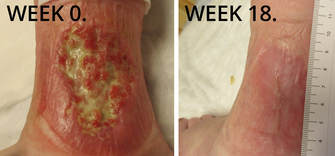
About the patient and previous treatment
A 49-year-old female with a long history of rheumatoid arthritis presented with a lower extremity ulcer that has previously been treated at a hospital. After an endovenous laser treatment the patient has been advised against further vein treatments due to potential health risks.
The patient sought second opinion regarding her wound at a wound clinic and has been treated with enzymatic ointment, hydroconductive dressings with little success. She has decided against a skin graft application due to her need to shower daily. She was taking several oral medications for her wound-related pain (Norco, Meloxicam and prednisone) as well as using topical steroid cream during the day and topical lidocaine at night.
In the 8 months that the patient had the wound there has been no healing progress and the wound continued to deteriorate. Enluxtra treatment has been suggested and the patient agreed to give it a try.
Enluxtra's surprise effect and wound closure
To the patient's and her attending clinicians' delight, once Enluxtra treatment started, not only the wound began to close up but the wound-related pain was steadily decreasing as well. Within 1 month the patient no longer had daytime pain and after 1.5 months she commented: "I no longer feel like my leg is being gnawed off". As the wound continued to heal, the patient was able to stop the topical lidocaine and reduce the dosage of Norco.
After 5 months of continuous Enluxtra dressing applications the wound has closed.
Scroll down to view the photos of the healing progress and clinical notes.
Learn more about Enluxtra
- View Enluxtra case studies to see how it can heal the most difficult, stubborn wounds that resisted previous treatment with other products.
- Find out about Enluxtra difference.
- To buy Enluxtra dressings visit our online store, or explore other purchasing options.
- Order free samples available to medical professionals.
- Read other posts in our blog.
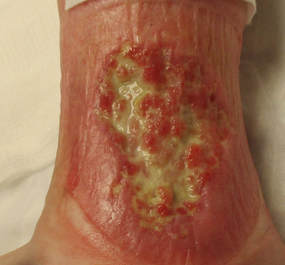
Pain level was 7 out of 10.
The wound bed contained 75% slough and 25% pink granulation tissue. The peri-wound was moist, edematous, with blisters.
Enluxtra dressing was started.
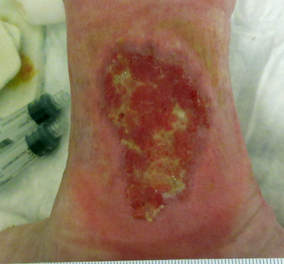
Edematous peri-wound was dry without blisters, pain was 3 out of 10. Overall condition of the wound was improved. Patient reported no pain during the day. Pain medication dosage has been reduced.
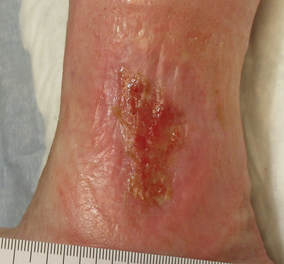
The patient was able to stop topical analgesic.
The wound bed contained 50% slough, 50% pink/red granulation tissue. The peri-wound remained moist and edematous. Enluxtra dressing changes continued daily per patient’s request.
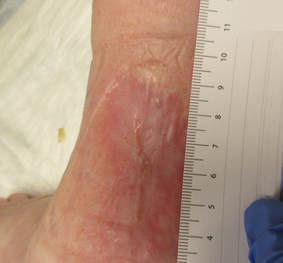
While the Enluxtra treatment was successful overall, daily dressing changes were not necessary once the slough was removed. The wound would have benefitted from less frequent dressing changes, which would have preserved homeostasis and allowed the wound to heal even faster.

 RSS Feed
RSS Feed
